HMS Cressy
Armoured Cruiser 1901
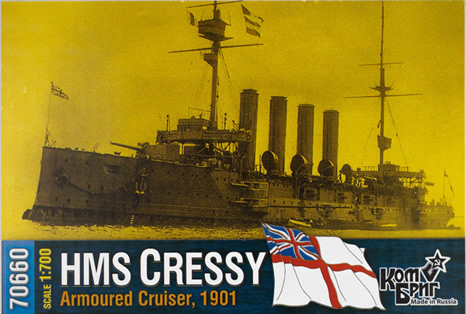
Combrig Models. 1/700th
Scale. Cast resin and brass.
Reviewed by Devin Poore, December 2021
|
| The armored cruiser concept came about in response to the
need for ships to protect the far-flung possessions of the British Empire.
HMS Cressy began construction in 1899, as the lead ship of her class.
Armed with two 9.1 inch guns in single mount turrets, she and her sisters
made approximately 20 knots, with a maximum armor thickness of 6 inches.
While not fast enough, or heavily armed or armored enough for battle line
duty, at the time of their construction they were more than adequate for
protecting overseas interests, and combatting commerce raiders and the
armored cruisers of other navies. HMS Cressy was commissioned in
1901, then deployed to protect the British Empire's overseas interests.
She spent the first and largest part of her active career on the China
Station, followed by a two year stint off of North America and West Indies.
With Naval technology advancing at a quick pace, she was decommissioned
and laid-up in 1909, but was re-activated at the beginning of World War
1. Assigned to a squadron tasked with protecting the English Channel against
surface force raids, she and several other older armored cruisers were
on station during the Battle of Heligoland Bight, but remained as reserve
and thus saw no action in the battle. Shortly thereafter, on September
22nd, 1914, Cressy, along with her two sisters HMS Aboukir
and HMS Hogue, were sunk in a quick action with the German submarine
U-9. The loss of three capital ships to a single submarine, over
the course of mere hours, lead to a complete restructuring to the British
tactics of defense against enemy submarines, and saw the removal of all
older and less-capable capital ships from forward deployed and high threat
areas. |
HMS Cressy, early in her career, via Maritimequest.com website
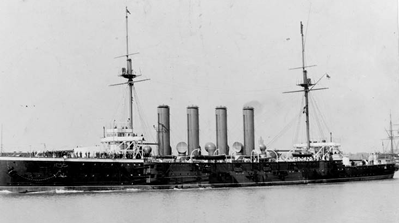
|
| HULL |
| The biggest part of the kit is of course the hull. Waterline
only, the hull is perfectly flat, straight, and true. All corners and details
are sharp. Combrig continues to be without equal in casting quality of
resin ship hulls.
Deck-edge line chocks are suitably hollow, details on the sides of the
hull are sharp, and the portholes are straight and aligned. Those that
regularly drill out portholes will likely find these deep enough, with
possibly the only thing needed being a few turns of a drill bit to sharpen
the edges. Deck planking detail is sharp and consistent, with details amongst
it, such as skylights, capstans, barbettes, etc., integrated seamlessly.
A very nice feature are the outlines of the forward superstructure to aid
in placement, and shallow lines molded into the midship's decks to precisely
locate the boat cradle photo etch pieces.
According to Combrig and the ship's Wikipedia entry, Cressy was 472',
or 143.9m, in length. I did find another source online that lists the ship's
length as 162m, but that is the only instance of that measurement that
I can find, all others are in the 143.9m neighborhood. Using 143.9m, the
result in 1/700 scale would be just over 8 inches, 8.09" to be precise.
My hull measures out at 7.97" overall, which is 1/8" short of the specifications. |
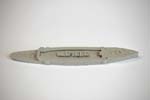
|
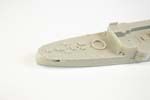 |
 |
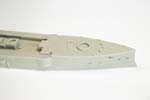 |
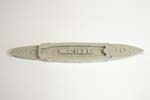
|
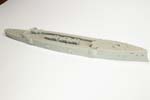
|
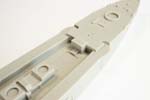
|
| DETAIL COMPONENTS |
| The remainder of the resin components are supplied on a
single cast wafer for bridge decks, stack bases, and a couple of deck structures;
a plastic bag holds the remainder of the parts, including the stacks, more
deck structures, boats, vents, and the like.
The flat cast wafer is thin enough that a little work with a sharp blade
and flush sanding should release the pieces easily. The bridge decks exhibit
the same fine planking detail as the hull, while the door details on the
deck structures and stack bases are sharp and clearly defined. The stacks
are perfectly cylindrical and have decent recesses. All vent structures
likewise feature nice recesses, but are not fully hollow; they'll likely
look just fine in this scale once a dark wash is applied to their interior.
The ship's boats are extremely well done: the hulls are smooth and aligned.
One would normally expect to see brass inserts to replicate the thwarts
and seats, but the seat detail is extremely sharp, so that once the supplied
brass oars are added, they'll more than look the part.
Other small bits included are capstans, anchors, winches, gun barrels,
gun turrets, searchlights, and all of the other small bits that bring a
ship to life. Everything is sharp, flash-free; I didn't find a single air
bubble in any parts of this kit. |

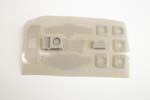
|

|
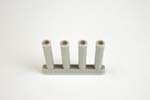
|
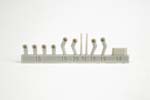
|
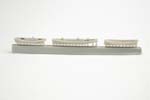
|

|
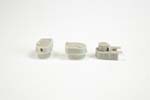
|
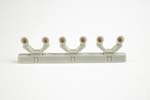 |
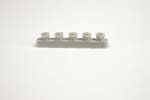 |
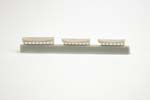 |
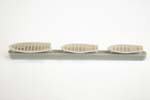 |
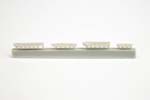 |
 |
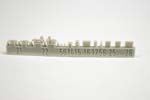 |
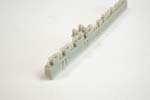 |
 |
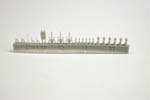 |
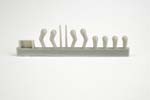 |
 |
| BRASS |
| The photo-etched brass sheet is typical of Combrig. Very
thin, .1mm/0.004" thick, it contain a plethora of boat davits, ladders,
railings, and dozens of oars to outfit the ship's boats. AS with all of
Combrig's kits, the brass is very soft and will require extreme care to
work with. Besides its softness, the only real issue I have with the brass
is the ship's railings. They're depicted accurately in that the rails attach
to the deck via individual stanchions, not in a solid rail/rain way as
most other model producers supply. Again, this is technically accurate
to the full-size prototype, but it results in very little gluing surface
to attach the railings. This is easily enough rectified with aftermarket
railings, and the rails make up very little of the entire fret, but it's
something to be aware of. |

|
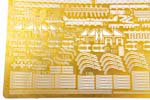
|
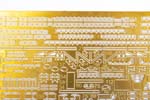
|

|
| INSTRUCTIONS |
| The instructions are on 10 loose sheets of 8.5" X 11" paper,
double-sided. A cover sheet and two parts lists start off the process,
and then the rest of the package are step-by step descriptions of construction.
The steps show the process with the different types of materials -- cast
resin, etched brass, brass wire -- in different colors, to differentiate
clearly. Each step is shown in two stages, first with an exploded-view
that shows each part required for the step and their approximate location
on the model, and then a second photo showing the parts installed. This
should help significantly with making sure all parts end up in their correct
location. Wire needs to be cut for masts and yards, the lengths of which
are specified in the instructions.
Instructions are shown for the ship's masts in both 1903 and 1914 configurations,
so make sure to select a version before beginning construction of those
assemblies.
There are no painting guidelines included, so the builder is on their
own with that. Brief research seems to indicate the 1903 fit can be painted
in the black/white/buff scheme, while the 1914 will be in the wartime gray. |
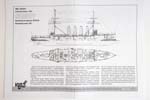 |
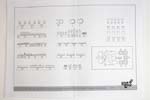 |
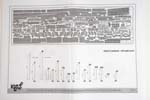 |
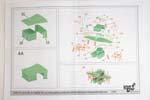 |
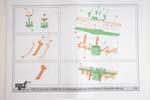 |
 |
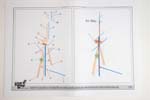 |
 |
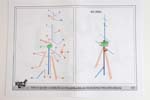 |
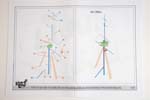 |
 |
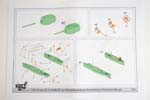 |
 |
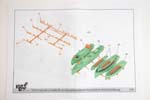 |
 |
 |
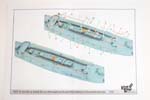 |
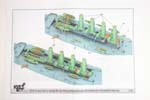 |
 |
| |
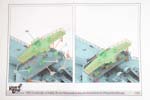 |
|
| CONCLUSIONS |
| This is another impressive kit from Combrig. Their resin
casting is second to none. I still wish all of the really fine parts such
as gun barrels and other breakage-prone bits would be packaged in something
more protective, but since there's no breakage in the kit, maybe I'm just
being paranoid. The brass etching is as fine as always, and soft, so I
wouldn't recommend the Cressy as a first-time resin kit. For those
looking for a beautiful kit of a beautiful kit, though, the HMS Cressy
from Combrig should turn out a beautiful finished model.
Highly recommended. Thank you to Combrig
for the review sample.
|

|

© ModelWarships.com
|






















































